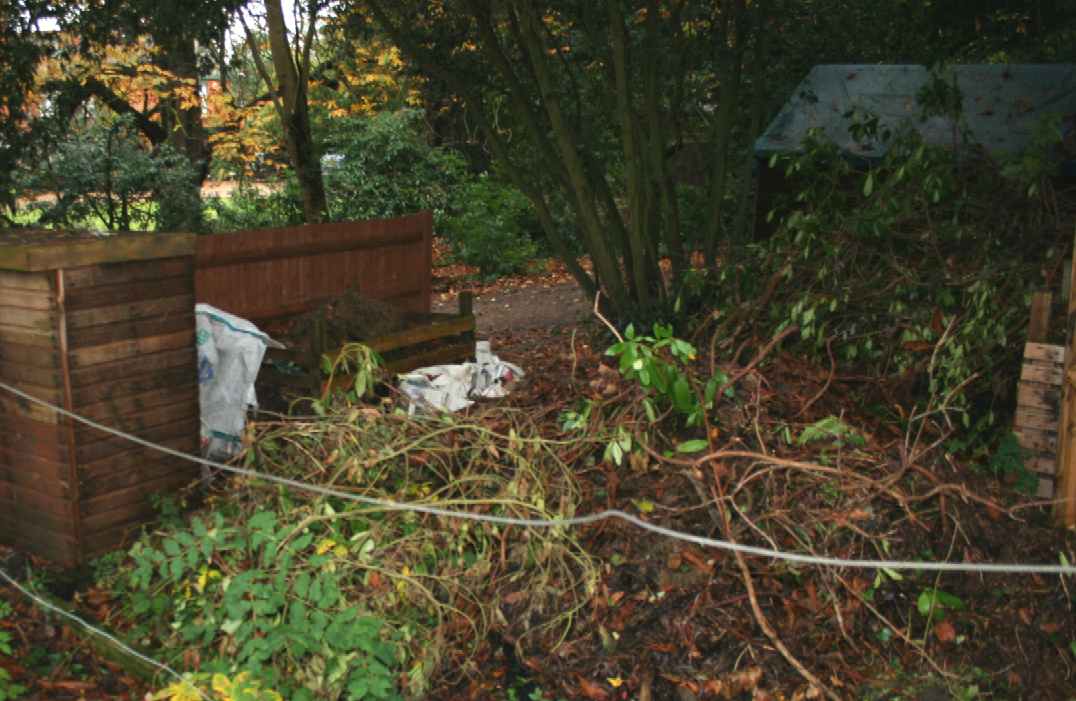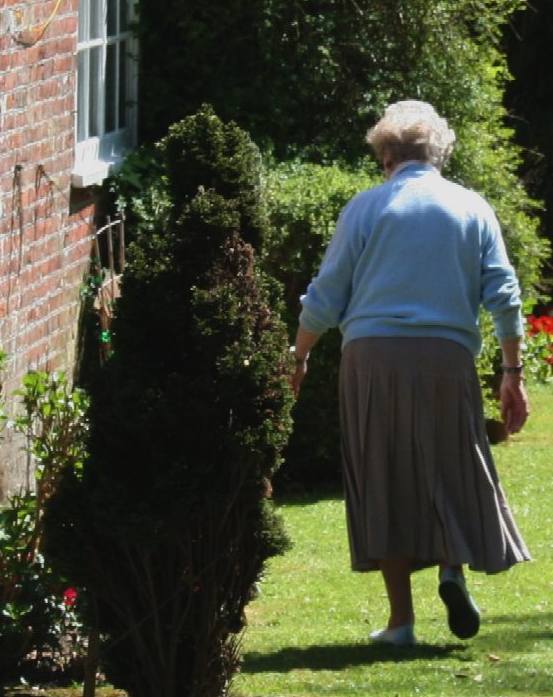High Hedges are dealt with under Part 8 of the Anti-social Behaviour Act 2003 which came into operation in England on 1 June 2005.
Provided they have tried and exhausted all other avenues for resolving their hedge dispute, people are now able to take their complaint about a neighbour's evergreen hedge to their local authority.
Councils may charge a fee for providing this service. Fees vary between councils and can be substantial. The fee is intended to encourage people to try to settle private disputes amicably, making sure that involving the council really is a last resort. The fee is also intended to help deter frivolous or vexatious complaints.
The role of the local authority is not to mediate or negotiate between the complainant and the hedge owner but to adjudicate on whether - in the words of the Act - the hedge is adversely affecting the complainant's reasonable enjoyment of their property.
In doing so, the authority must take account of all relevant factors and must strike a balance between the competing interests of the complainant and hedge owner, as well as the interests of the wider community.
If they consider the circumstances justify it, the local authority will issue a formal notice to the hedge owner which will set out what they must do to the hedge to remedy the problem, and when by.
Failure to carry out the works required by the authority is an offence which, on prosecution, could lead to a fine of up to 1,000 GBP.

LIGHTING
OF BONFIRES - Another deliberate act allegedly designed to cause
loss, or expose the historic buildings as to potential fires and vermin
infestation, was the lighting of bonfires in close proximity to the
historic generating buildings. This small parcel of land was used to
store plant material and branches that was then lit, just feet away from
a boundary. At the time the parcel of land was owned by Camille de Kok.
According to the fround workers, fires were lit under instruction of
Louise Jones and Peter Townley, as directors of Lime Park Estate
Limited.
The
occupiers of the historic buildings complained to the local authority
and the Fire Brigade. In the end the fires had to cease because Russell
Pike was not covered against fire risk with adjacent buildings being so
close. The fencing seen here was removed by Lime Park Estate Limited
after it was pointed out that it caused an obstruction to enjoyment of
the shared drive. Camille de Kok and Louise Jones sold up and moved
shortly after this episode in the vendetta that was unfolding.
ANTISOCIAL
BEHAVIOUR ACT 2003 - SECTION 8
Part 8 High hedges
Introductory
65 Complaints to which this Part applies
(1) This Part applies to a complaint which —
(a) is made for the purposes of this Part by an owner or occupier of a domestic property; and
(b) alleges that his reasonable enjoyment of that property is being adversely affected by the height of a high hedge situated on land owned or occupied by another person.
(2) This Part also applies to a complaint which —
(a) is made for the purposes of this Part by an owner of a domestic property that is for the time being unoccupied, and
(b) alleges that the reasonable enjoyment of that property by a prospective occupier of that property would be adversely affected by the height of a high hedge situated on land owned or occupied by another person,
as it applies to a complaint falling within subsection (1).
(3) In relation to a complaint falling within subsection (2), references in sections 68 and 69 to the effect of the height of a high hedge on the complainant’s reasonable enjoyment of a domestic property shall be read as references to the effect that it would have on the reasonable enjoyment of that property by a prospective occupier of the property.
(4) This Part does not apply to complaints about the effect of the roots of a high hedge.
(5) In this Part, in relation to a complaint —
“complainant” means —
(a)
a person by whom the complaint is made; or
(b) if every person who made the complaint ceases to be an owner or occupier of the domestic property specified in the complaint, any other person who is for the time being an owner or occupier of that property;
and references to the complainant include references to one or more of the complainants;
“the neighbouring land” means the land on which the high hedge is situated; and
“the relevant authority” means the local authority in whose area that land is situated.
66 High hedges
(1) In this Part “high hedge” means so much of a barrier to light or access as—
(a) is formed wholly or predominantly by a line of two or more evergreens; and
(b) rises to a height of more than two metres above ground level.
(2) For the purposes of subsection (1) a line of evergreens is not to be regarded as forming a barrier to light or access if the existence of gaps significantly affects its overall effect as such a barrier at heights of more than two metres above ground level.
(3) In this section “evergreen” means an evergreen tree or shrub or a semi-evergreen tree or shrub.
67 Domestic property
(1) In this Part “domestic property” means —
(a) a dwelling; or
(b) a garden or yard which is used and enjoyed wholly or mainly in connection with a dwelling.
(2) In subsection (1) “dwelling” means any building or part of a building occupied, or intended to be occupied, as a separate dwelling.
(3) A reference in this Part to a person’s reasonable enjoyment of domestic property includes a reference to his reasonable enjoyment of a part of the property.
74 Powers of entry for the purposes of complaints and appeals
(1) Where, under this Part, a complaint has been made or a remedial notice has been issued, a person authorised by the relevant authority may enter the neighbouring land in order to obtain information required by the relevant authority for the purpose of
determining —
(a) whether this Part applies to the complaint;
(b) whether to issue or withdraw a remedial notice;
(c) whether to waive or relax a requirement of a remedial notice;
(d) whether a requirement of a remedial notice has been complied with.
(2) Where an appeal has been made under section 71, a person authorised—
(a) by the appeal authority, or
(b) by a person appointed to determine appeals on its behalf,
may enter the neighbouring land in order to obtain information required by the appeal authority, or by the person so appointed, for the purpose of determining an appeal under this Part.
(3) A person shall not enter land in the exercise of a power conferred by this section unless at least 24 hours' notice of the intended entry has been given to every occupier of the land.
(4) A person authorised under this section to enter land—
(a) shall, if so required, produce evidence of his authority before entering; and
(b) shall produce such evidence if required to do so at any time while he remains on the land.
(5) A person who enters land in the exercise of a power conferred by this section may—
(a) take with him such other persons as may be necessary;
(b) take with him equipment and materials needed in order to obtain the information required;
(c) take samples of any trees or shrubs that appear to him to form part of a high hedge.
(6) If, in the exercise of a power conferred by this section, a person enters land which is unoccupied or from which all of the persons occupying the land are temporarily absent, he must on his departure leave it as effectively secured against unauthorised entry as he found it.
(7) A person who intentionally obstructs a person acting in the exercise of the powers under this section is guilty of an offence and shall be liable, on summary conviction, to a fine not exceeding level 3 on the standard scale.


75 Offences
(1) Where—
(a) a remedial notice requires the taking of any action, and
(b) that action is not taken in accordance with that notice within the compliance period or (as the case may be) by the subsequent time by which it is required to be taken,
every person who, at a relevant time, is an owner or occupier of the neighbouring land is guilty of an offence and shall be liable, on summary conviction, to a fine not exceeding level 3 on the standard scale.
(2) In subsection (1) “relevant time”—
(a) in relation to action required to be taken before the end of the compliance period, means a time after the end of that period and before the action is taken; and
(b) in relation to any preventative action which is required to be taken after the end of that period, means a time after that at which the action is required to be taken but before it is taken.
(3) In proceedings against a person for an offence under subsection (1) it shall be a defence for him to show that he did everything he could be expected to do to secure compliance with the notice.
(4) In any such proceedings against a person, it shall also be a defence for him to show, in a case in which he—
(a) is not a person to whom a copy of the remedial notice was sent in accordance with a provision of this Part, and
(b) is not assumed under subsection (5) to have had knowledge of the notice at the time of the alleged offence,
that he was not aware of the existence of the notice at that time.
(5) A person shall be assumed to have had knowledge of a remedial notice at any time if at that time—
(a) he was an owner of the neighbouring land; and
(b) the notice was at that time registered as a local land charge.
(6) Section 198 of the Law of Property Act 1925 (c. 20) (constructive notice) shall be disregarded for the purposes of this section.
(7) Where a person is convicted of an offence under subsection (1) and it appears to the court—
(a) that a failure to comply with the remedial notice is continuing, and
(b) that it is within that person’s power to secure compliance with the notice,
the court may, in addition to or instead of imposing a punishment, order him to take the steps specified in the order for securing compliance with the notice.
(8) An order under subsection (7) must require those steps to be taken within such reasonable period as may be fixed by the order.
(9) Where a person fails without reasonable excuse to comply with an order under subsection (7) he is guilty of an offence and shall be liable, on summary conviction, to a fine not exceeding level 3 on the standard scale.
(10) Where a person continues after conviction of an offence under subsection (9) (or of an offence under this subsection) to fail, without reasonable excuse, to take steps which he has been ordered to take under subsection (7), he is guilty of a further offence and shall be liable, on summary conviction, to a fine not exceeding one-twentieth of that level for each day on which the failure has so continued.
INDEX
TO SECTIONS
65.Complaints to which this Part applies
66.High hedges
67.Domestic property
Complaints procedure
68.Procedure for dealing with complaints
69.Remedial notices
70.Withdrawal or relaxation of requirements of remedial notices
Appeals
71.Appeals against remedial notices and other decisions of relevant authorities
72.Appeals procedure
73.Determination or withdrawal of appeals
Powers of entry
74.Powers of entry for the purposes of complaints and appeals
Enforcement powers etc.
75.Offences
76.Power to require occupier to permit action to be taken by owner
77.Action by relevant authority
78.Offences committed by bodies corporate
Supplementary
79.Service of documents
80.Documents in electronic form
81.Power to make further provision about documents in electronic form
82.Interpretation
83.Power to amend sections 65 and 66
84.Crown application


OPENING - Her
http://www.legislation.gov.uk/ukpga/2003/38/contents
https://www.planningportal.co.uk/info/200130/common_projects/29/high_hedges
https://www.gov.uk/government/publications/hedge-height-and-light-loss




